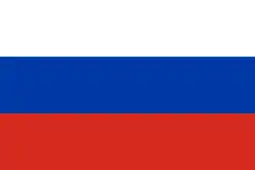Archduke Rainer Ferdinand of Austria
Archduke Rainer Ferdinand Maria Johann Evangelist Franz Ignaz of Austria (11 January 1827 – 27 January 1913), a member of the House of Habsburg-Lorraine and nephew of Emperor Francis II, was an Austrian politician who served as Minister-President of Austria from 1861 to 1865.
Archduke Rainer of Austria | |
|---|---|
.jpg.webp) | |
| 3rd Chairman of the Austrian Ministers' Conference | |
| In office 4 February 1861 – 26 June 1865 | |
| Monarch | Francis Joseph I |
| Preceded by | Johann Bernhard Graf von Rechberg und Rothenlöwen |
| Succeeded by | Alexander Graf von Mensdorff-Pouilly |
| Personal details | |
| Born | 11 January 1827 Milan, Kingdom of Lombardy–Venetia, Austrian Empire |
| Died | 27 January 1913 (aged 86) Hofburg Palace, Vienna, Austria-Hungary |
| Resting place | Imperial Crypt |
| Spouse(s) | Archduchess Maria Karoline of Austria |
| Parents | Archduke Rainer of Austria Princess Elisabeth of Savoy |
Biography
Born in Milan, the capital of the Austrian Kingdom of Lombardy–Venetia, he was a son of Viceroy Archduke Rainer of Austria (1783–1853) and his consort Princess Elisabeth of Savoy (1800–1856). Rainer spent most of his youth at the Royal Villa of Monza. He studied law at the University of Vienna and in 1843 joined the Austrian Imperial Army in the rank of an Oberst (Colonel).

In 1852, he married his cousin Archduchess Maria Karoline of Austria (1825–1915), a daughter of Archduke Charles, known for his victory at the 1809 Battle of Aspern. The marriage was a very happy one, and, with numerous public appearances and charitable activities, the couple was probably the most popular amongst the Habsburg family. The lavish celebration of their diamond wedding in 1912 was rated as one of the last great events of the dissolving Austro-Hungarian Monarchy before World War I. However, the marriage remained childless.
In 1854, Rainer achieved the rank of Generalmajor in the Imperial Army and in 1861 was raised to Feldmarschall-Leutnant (Field marshal lieutenant). Beside his military career, he was also interested in art and science, in particular the emerging Papyrology. In 1899 he donated his extensive Faiyum papyrus collection to the Austrian National Library, part of the UNESCO Memory of the World Register since 2001.
Already in 1857, Archduke Rainer was appointed president of the Austrian Imperial Council by Emperor Francis Joseph I. In the course of the implementation of the 1861 February Patent constitution, he took up office as nominal Minister-President chairing the liberal cabinet of State Minister Anton von Schmerling.
Honours
- Austro-Hungarian[1]
- Knight of the Golden Fleece, 1852[2]
- Grand Cross of St. Stephen, 1862[2]
- Military Merit Cross, in Diamonds
- Bronze Military Merit Medal on Red Ribbon
- Foreign[1]
.svg.png.webp) Baden: Knight of the House Order of Fidelity, 1873[3]
Baden: Knight of the House Order of Fidelity, 1873[3].svg.png.webp) Kingdom of Bavaria: Knight of St. Hubert, 1860[4]
Kingdom of Bavaria: Knight of St. Hubert, 1860[4].svg.png.webp) Belgium: Grand Cordon of the Order of Leopold (military), 2 February 1874[5]
Belgium: Grand Cordon of the Order of Leopold (military), 2 February 1874[5].svg.png.webp) Empire of Brazil: Grand Cross of the Southern Cross
Empire of Brazil: Grand Cross of the Southern Cross.svg.png.webp)
.svg.png.webp)
.svg.png.webp) Ernestine duchies: Grand Cross of the Saxe-Ernestine House Order
Ernestine duchies: Grand Cross of the Saxe-Ernestine House Order.svg.png.webp) France: Grand Cross of the Legion of Honour
France: Grand Cross of the Legion of Honour.svg.png.webp) Kingdom of Greece: Grand Cross of the Redeemer
Kingdom of Greece: Grand Cross of the Redeemer Grand Duchy of Hesse:
Grand Duchy of Hesse:
- Grand Cross of the Ludwig Order, 11 September 1860[6]
- Knight of the Golden Lion
_crowned.svg.png.webp) Kingdom of Italy: Knight of the Annunciation, 21 September 1873[7]
Kingdom of Italy: Knight of the Annunciation, 21 September 1873[7] Mecklenburg: Grand Cross of the Wendish Crown
Mecklenburg: Grand Cross of the Wendish Crown Monaco: Grand Cross of St. Charles
Monaco: Grand Cross of St. Charles.svg.png.webp) Nassau Ducal Family: Knight of the Gold Lion of Nassau
Nassau Ducal Family: Knight of the Gold Lion of Nassau Netherlands: Grand Cross of the Netherlands Lion
Netherlands: Grand Cross of the Netherlands Lion.svg.png.webp) Kingdom of Portugal: Grand Cross of the Tower and Sword
Kingdom of Portugal: Grand Cross of the Tower and Sword.svg.png.webp) Kingdom of Prussia:
Kingdom of Prussia:
- Knight of the Black Eagle
- Knight of the Red Eagle, 1st Class
 Kingdom of Romania: Grand Cross of the Star of Romania
Kingdom of Romania: Grand Cross of the Star of Romania Russian Empire:
Russian Empire:
- Knight of St. Andrew
- Knight of St. Alexander Nevsky
- Knight of the White Eagle
- Knight of St. Anna, 1st Class
.svg.png.webp) Saxe-Weimar-Eisenach: Grand Cross of the White Falcon, 1885[8]
Saxe-Weimar-Eisenach: Grand Cross of the White Falcon, 1885[8].svg.png.webp) Kingdom of Saxony: Knight of the Rue Crown
Kingdom of Saxony: Knight of the Rue Crown.svg.png.webp) Spain: Grand Cross of the Order of Charles III, with Collar, 24 November 1879[9]
Spain: Grand Cross of the Order of Charles III, with Collar, 24 November 1879[9] Sweden: Knight of the Seraphim, 5 December 1908[10]
Sweden: Knight of the Seraphim, 5 December 1908[10].svg.png.webp) Grand Duchy of Tuscany: Grand Cross of St. Joseph
Grand Duchy of Tuscany: Grand Cross of St. Joseph.svg.png.webp) Two Sicilies:
Two Sicilies:
 United Kingdom: Honorary Grand Cross of the Royal Victorian Order, 9 October 1903[11]
United Kingdom: Honorary Grand Cross of the Royal Victorian Order, 9 October 1903[11] Württemberg: Grand Cross of the Württemberg Crown, 1873[12]
Württemberg: Grand Cross of the Württemberg Crown, 1873[12]
Ancestry
| Ancestors of Archduke Rainer Ferdinand of Austria |
|---|
References
- "Genealogie des Allerhöchsten Herrscherhauses", Hof- und Staatshandbuch der Österreichisch-Ungarischen Monarchie, 1912, pp. 13-14, retrieved 23 July 2020
- "Ritter-Orden", Hof- und Staatshandbuch der Österreichisch-Ungarischen Monarchie, 1912, pp. 44, 47, retrieved 23 July 2020
- Hof- und Staats-Handbuch des Großherzogtum Baden (1876), "Großherzogliche Orden" p. 59
- Hof- und Staats-Handbuch des Königreich Bayern (1908), "Königliche Orden" p. 8
- Belgien (1875). Almanach royal officiel: 1875. p. 55.
- Hof- und Staats-Handbuch des Großherzogtum Hessen (1879), "Großherzogliche Orden und Ehrenzeichen" p. 11
- Italia : Ministero dell'interno (1898). Calendario generale del Regno d'Italia. Unione tipografico-editrice. p. 53.
- Staatshandbuch für das Großherzogtum Sachsen / Sachsen-Weimar-Eisenach (1900), "Großherzogliche Hausorden" p. 16
- "Real y distinguida orden de Carlos III", Guía Oficial de España, 1911, p. 163, retrieved 23 July 2020
- Sveriges Statskalender (in Swedish), 1909, p. 614, retrieved 2018-01-06 – via runeberg.org
- The London Gazette, issue 27604, p. 6148
- Hof- und Staats-Handbuch des Königreich Württemberg (1907), "Königliche Orden" p. 28
| Preceded by Johann Bernhard von Rechberg und Rothenlöwen |
Minister-President of Austria 4 February 1861 – 26 June 1865 |
Succeeded by Alexander von Mensdorff-Pouilly |
